
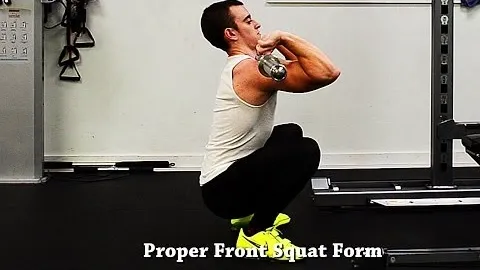
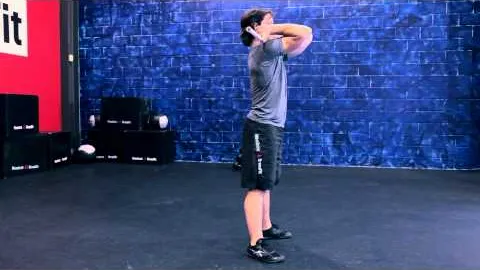
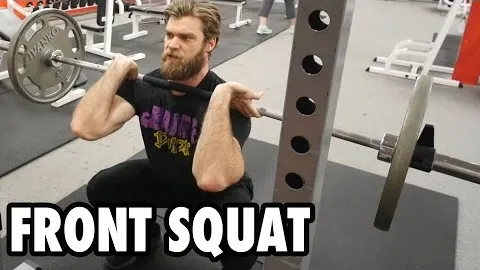

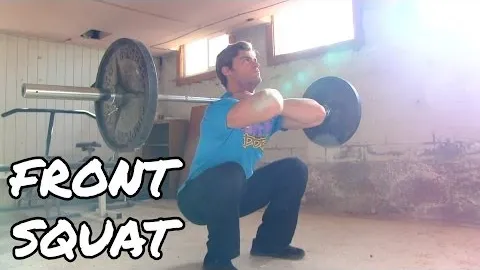
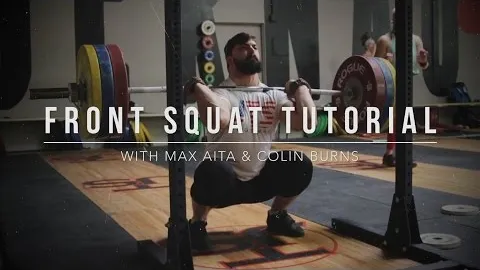
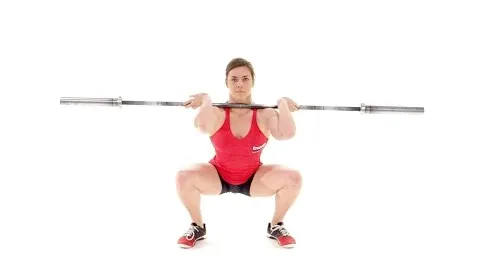
The front squat is an essential exercise in any comprehensive strength training program. It targets the lower body, specifically the quadriceps, glutes, and hamstrings, while also engaging the core muscles for stability. Incorporating front squats into your workout routine can help improve your overall strength, flexibility, and body composition.
Front squats require you to keep the barbell resting on the front of your shoulders, which demands more strength and stability from your core muscles compared to traditional back squats. This increased load results in greater muscle activation in the quads, hamstrings, and glutes.
Because the front squat places the weight in front of your body, your core muscles are forced to work harder to maintain an upright position. This not only strengthens your abs and lower back but also enhances your overall stability and balance.
Front squats require more ankle mobility than back squats as you need to keep your torso more upright. Additionally, the deep squatting position in front squats promotes hip mobility, which can be helpful for athletes and individuals involved in activities that require lower body flexibility.
By holding the barbell in front of your shoulders, front squats help improve your overall posture. This exercise encourages you to maintain an upright position, aligning your spine properly and reducing the risk of back injuries.
Front squats closely mimic movements required in various sports and activities. The ability to transfer the strength gained from front squats to real-life functional movements is invaluable. This exercise can improve your performance not only in sports but also in everyday activities like lifting objects and maintaining proper form during movements.
To perform a front squat correctly, follow these steps:
Start by setting up your squat rack at a height that allows you to comfortably rest the bar on the front of your shoulders.
Approach the barbell and stand with your feet shoulder-width apart. Your toes should be slightly turned out.
Reach forward and grip the bar with your hands just beyond shoulder-width apart. Ensure your wrists are flexed upward, creating a solid base for the bar to rest on.
Bring your elbows up, parallel to the ground. This position helps keep the bar stable and prevents it from rolling off your shoulders.
Inhale deeply, brace your core, and unrack the bar. Step back from the rack, maintaining a strong, upright torso.
Begin the descent by bending at the knees and hips simultaneously. Keep your heels planted on the ground and your chest up. Focus on maintaining an upright position throughout the movement.
Lower yourself until your thighs are parallel to the ground or below, making sure your knees track in line with your toes.
Exhale and push through your heels to extend your knees and hips, returning to the starting position.
Repeat the movement for the desired number of repetitions.
To get the most out of your front squats and prevent injuries, it's important to be aware of these common mistakes:
Ensure the barbell is resting on your anterior deltoids (the front of your shoulders) and not on your collarbone. Holding the bar incorrectly can cause unnecessary strain on your wrists and upper back.
Maintain a neutral spine throughout the exercise. A rounded back can put excessive stress on your lower back and increase the risk of injury.
Avoid performing half or quarter squats. To fully engage the targeted muscles and reap the benefits, aim to squat until your thighs are parallel to the ground or below.
Keep your knees in line with your toes throughout the movement. Allowing your knees to cave inward or pushing them too far forward can put undue stress on the knee joint.
Front squats can be performed as part of a lower body workout or as a standalone exercise. Here are a few ways you can incorporate them into your routine:
Lower Body Strength Day: Perform front squats as one of your primary exercises for the lower body. Start with a few warm-up sets and gradually increase the weight to challenge your muscles.
Superset: Pair front squats with a lower body accessory exercise, such as lunges or step-ups. This superset will enhance your workout intensity and provide an additional challenge for your muscles.
Circuit Training: Include front squats in a circuit training routine for a full-body workout. Combine them with other compound exercises like push-ups, rows, and planks for a comprehensive strength and conditioning session.
Active Recovery: Incorporate front squats into your active recovery routine. Perform them with lighter weights and focus on perfecting your form and technique while promoting blood flow to your muscles.
The front squat is a highly effective exercise that can help you build strength, stability, and muscle mass in your lower body. By incorporating this compound movement into your workout routine with proper form and technique, you can enhance your athletic performance and improve your overall body composition. Remember to start with lighter weights and gradually progress as you gain strength and confidence. Push yourself, but always listen to your body to prevent injuries.
If you're looking for a gym, fitness club or yoga studio, you've come to the right place.
You can find information about gyms in your area. Browse catalog of gyms and find gyms with classes which are you looking for.
On gym page you can find simple information like address, phone or website. You can find list of available classes. You can check availability of personal training or small group classes. On place page you can also see information about open hours.
You can find gyms near you with amenities, courts, studios and equipments.
Use our map to find gym at your city or district.
In Gym Navigator you can find list of exercises with movies for many body parts.
You can browse exercises catalog and find exercises the best of you.
You can also find exercises grouped into workout plans, which you can use to improve you body. Each routine show you exercises one by one and give you possibility to count you progress and count down rest time.